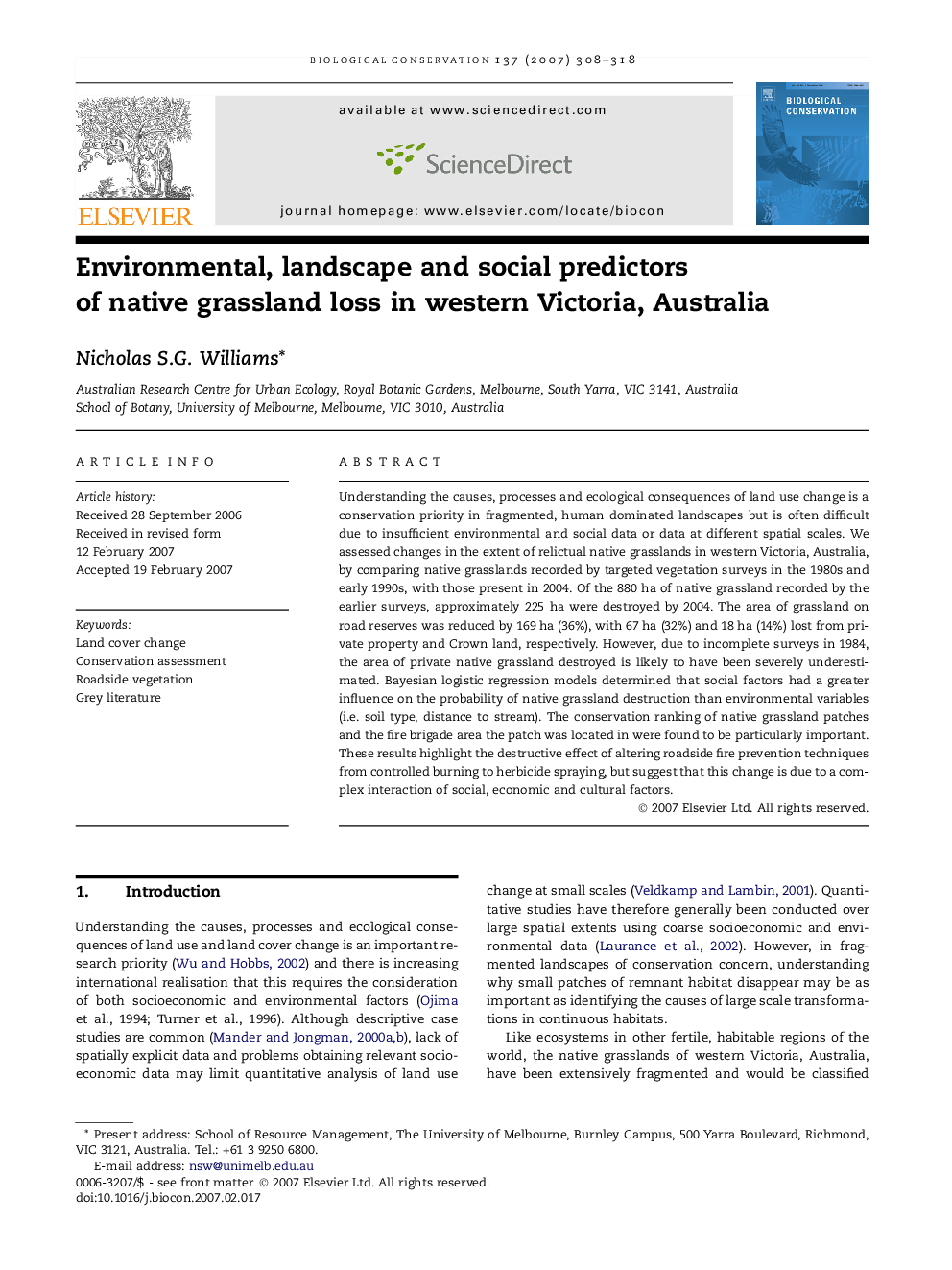| Article ID | Journal | Published Year | Pages | File Type |
|---|---|---|---|---|
| 4387362 | Biological Conservation | 2007 | 11 Pages |
Understanding the causes, processes and ecological consequences of land use change is a conservation priority in fragmented, human dominated landscapes but is often difficult due to insufficient environmental and social data or data at different spatial scales. We assessed changes in the extent of relictual native grasslands in western Victoria, Australia, by comparing native grasslands recorded by targeted vegetation surveys in the 1980s and early 1990s, with those present in 2004. Of the 880 ha of native grassland recorded by the earlier surveys, approximately 225 ha were destroyed by 2004. The area of grassland on road reserves was reduced by 169 ha (36%), with 67 ha (32%) and 18 ha (14%) lost from private property and Crown land, respectively. However, due to incomplete surveys in 1984, the area of private native grassland destroyed is likely to have been severely underestimated. Bayesian logistic regression models determined that social factors had a greater influence on the probability of native grassland destruction than environmental variables (i.e. soil type, distance to stream). The conservation ranking of native grassland patches and the fire brigade area the patch was located in were found to be particularly important. These results highlight the destructive effect of altering roadside fire prevention techniques from controlled burning to herbicide spraying, but suggest that this change is due to a complex interaction of social, economic and cultural factors.
